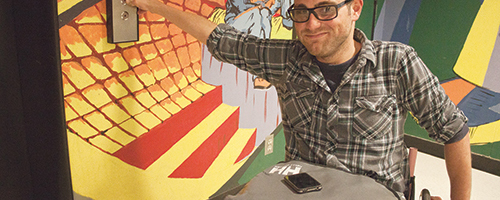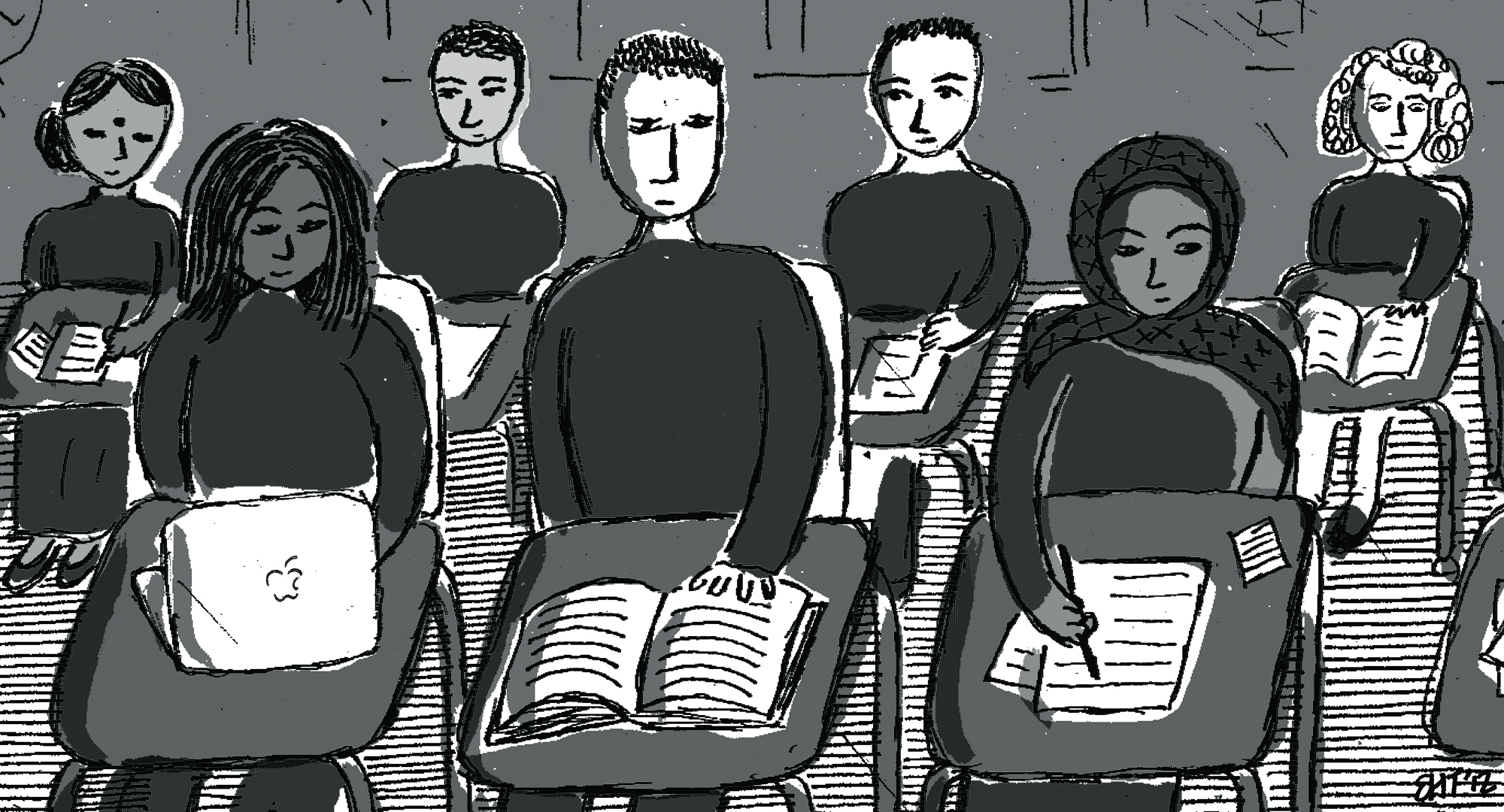Over the last year I’ve had to come to a somewhat painful realization regarding my body: I will never have a thigh gap. No matter how many hours I spend at the gym on a weekly basis or what foods I banish from my diet, my thighs are going to touch. And that’s OK.
On beauty
Over the last year I’ve had to come to a somewhat painful realization regarding my body: I will never have a thigh gap. No matter how many hours I spend at the gym on a weekly basis or what foods I banish from my diet, my thighs are going to touch. And that’s OK.
Don’t know what a thigh gap is? Congratulations! You don’t use Tumblr, and that alone is something to be proud of, considering our Internet-and-social-media-obsessed world. A thigh gap is the space left between your thighs when you stand with your feet together. It’s a trend—if you could call it that—seen on models like Alexa Chung (who has a gap even with her legs crossed) and Kate Moss, as well as many other celebrities.
Along with its actual existence on actual bodies, the thigh gap is also quickly becoming a frequently talked about subject. The Huffington Post, ABC, Vice and many other news and blogging sites have run segments on this non-body-part. Vice went so far as to label it a “must-have” accessory on par with Hermes bags.
Vice also recently published an article declaring a war on the thigh gap, saying it was a sign that means “your body is underweight,” as well as a sign of privilege. In some ways (read: some, not all), the underweight part is true, but the sticky bit is the privilege part. Bertie Brandes, the article’s author, goes on a body-shaming rampage, calling out anyone guilty of having space between their thighs.
Brandes said that girls—because she limits the thigh gap to one gender—with thigh gaps also have “a spray tan, a stylist and a modeling contract,” as well as “a photographer, a soundtrack and a gym membership.” Yeah, sure, those generalizations are true in some situations, but Brandes’ entire article is full of body-shaming and compares genetics to privilege.
The fashion industry gets a lot of criticism, most of it warranted. However, I’ve yet to read an article about Marc Jacobs, Karl Lagerfeld or
Alexander McQueen’s designers requiring their models to have thigh gaps. This isn’t to defend any negative body images that the industry continuously perpetuates, but the industry purposefully scouts out tall, naturally thin individuals to model next season’s ready-to-wear, avant-garde styles.
And thanks to the rising eminence of Tumblr and Instagram, we’re force-fed this thigh-gapped image of what a handful of 13-year-old girls are telling us is the “ideal” body type.
Instagram does little to help provide a steady flow of healthy body images for younger generations. The popular app gives us a sense of constant surveillance, and if we don’t look a certain way at all times, we’ll look awful in the off chance that someone snaps a candid photo.
Within the last year, the “thinspiration” battle erupted and then quietly disappeared from the Tumblr front. “Thinspo” blogs often include photos of thin girls—all sporting the thigh gap and wearing trendy “soft grunge” clothing—and diet tips, ways to ignore hunger and exercises to produce the protruding collar and hip bones necessary to fit the mold.
Please note: Never use the phrase “soft grunge.” Ever.
You might have noticed that many of these Tumblr blogs have disappeared. The people in charge took down pages that seemed to be pro-anorexia/bulimia or perpetuated thinspo. Recently The Huffington Post reported that “teens spend an average of 53 hours per week consuming various media.” When you consider that a majority of us are plugged into Tumblr, Facebook, Instagram and Twitter, that’s a whole lot of time to be flooded with
images of someone else’s body ideal.
Many active users under the thinspo banner use second-wave feminism jargon as justification to continue their unhealthy lifestyles. CJ Pascoe, a sociologist who wrote Anas, Mias and Wannas: Pro-Ana Communities and Identities Online, stated, “They say, ‘Y’know, this is my lifestyle—I live an extremely low-calorie lifestyle and this is my choice.’”
There’s truth to that, but is it worth risking your own life for a thigh gap and jutting hip bones?
A thigh gap is almost impossible to gain unless you’re born with the right genetics. It’s OK to have a thigh gap; it’s OK to not have a thigh gap.
Rather than bagging on those of us who want a thigh gap, or who are OK with not having one, how about we just accept that we all want different things?
I didn’t start writing this aligned with the second-wave idea, but we’re all free to make our own decisions regarding our bodies, and it’s really no one’s business to tell us what to do. My only advice is to please be healthy and love your body. And if there are parts of you that you don’t like, change them, but do so in a way that will help you, not hurt you.
The YOLO trend has come and passed, and it was annoying as hell. But I don’t believe in reincarnation—we only get one life, and we only get one body. It’s hard to do, but once you start loving yourself you’ll stop worrying about relatively miniscule things like thigh gaps. I promise.






Awesome post! Criticizing women (bc it’s not just girls) who want a thigh gap is akin to criticizing men for obsessing about six pack abs and bigger biceps, or those “lift heavy” women for obsessing about increasing their lifts. Everyone wants different things and it’s OKAY!
Furthermore, this is not a new trend. Women have been wanting thinner thighs for eons because some people happen to think its feminine; as well as for practical reasons such as getting rid of rubbing thighs, cellulite, stretch marks, loose jiggly skin, etc.
For those looking to effectively thin out their inner and outer thighs without starvation diets and knowing the right exercises to do as well as to avoid, I’d recommend checking out the book “The Thigh Gap Hack” (google it or check out http://www.thighgaphack.com)
Thank you! I just heard about this not long ago, and was blown away. Having the body of a woman and not the body of a string bean is something to be proud of!!